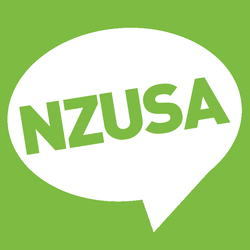Students have come out in support of the Minister of
Education Chris Hipkins’ announcement on the Reform of
Vocational Education (RoVE), as the high level statements
are so far a step in right direction towards fulfilling the
RoVE student wishlist (included below).
Positive additions to the original proposal include a broadened definition of the Regional Leadership Groups to include the likes of the Ministry of Social Development and Immigration to ensure campuses maintain a regional focus. A Māori Advisory Group, ‘Te Taumata Aronui’, will be set up to advise the transition council and National Institute. A legislative charter will also be established to define how the national organisation is expected to operate, which will include the likes of the requirement for staff and student democratic structures throughout. Finally, it has been suggested that those ITP’s that are really struggling financially (such as Whitireia and Tai Poutini) will be assisted through the transition process.
‘Todays announcement is exciting as it shows that the Minister has been listening. Ensuring student democratic structures throughout the system, improving student voice within ITO’s (by bringing them into the National institute), adding Te Taumata Aronui and ensuring both baseline and population size funding are all positive steps in response to the loud voices in the tertiary space, including students’ – said James Ranstead, President of the New Zealand Union of Students’ Associations.
“It is great to see that the Minister has heeded calls to retain regional autonomy within the new Institute. Providers such as the Eastern Institute of Technology have a fantastic relationship with their communities which empowers learners and improves their educational outcomes. Having this community buy-in is vital to regional success and the new Institute needs to be established with this in mind” – Andrew Lessels, President of Younited at the Eastern Institute of Technology.
Regardless of the medium to long term certainty, NZUSA recognises there will be some angst amongst students on the changes soon to come. The Minister has confirmed that for those students currently studying, there will be no or minor changes to their programme of study. For those students soon to begin studying, the qualifications on offer to them may differ, and likely be reduced.
‘We believe that these changes are overall a step in the right direction, however students need to be shown transparency and given certainty as early as possible on their programmes of study, and a smooth transition for students should be the number one goal for any decision maker in this space. This includes students from a variety of backgrounds, including international students who are still solely being labelled as a ‘market’ ’– said Ranstead.
Todays’ announcement from the Minister has been very high level, and while NZUSA respects the decision for the transition board to work out much of the granular detail over time, the board should not underestimate the importance of responding to the RoVE student wishlist.
‘There hasn't yet been any clarity on how a seamless transition (particularly in regards to students programme of study) from the current old model to the new model will be ensured. Whilst mention of the democratic structures are a plus, there is yet to be any certainty of students association resourcing, or the return of student services reflective of the pre-VSM era. Finally, we are also yet to hear about the Youth Guarantee CSSF payment exclusion, and the national centre for student voice. There are moves to fulfill 5/10 of our RoVE student wishlist, and the transition council can be assured that students will be putting on the pressure on these issues over the next 8 months.’ – said Ranstead.
Reform of Vocational Education Student Wishlist 2019:
1. Ensuring provision is localised in regions that need it, regardless of the population size (bums on seats) that currently drives provision levels.
2. Well supported RoVE transitions that maintain and enhance educational quality and learner experience.
3. A seamless transition from education to employment, regardless of student background and qualification.
4. Independent students associations as opposed to student councils supported, with a guaranteed level of resourcing. This is in contrast to the current piecemeal system, leaving some institutes with no student voice whatsoever
5. Adequate on campus student services reflective of the pre-Voluntary Student Membership era, with a special emphasis on mental health services
6. Youth Guarantee Compulsory Student Services Fee (CSSF) payment exclusion covered by parent institute
7. Organisational structure and education that is flexible (e.g. blended learning) to suit the 21st century student, meanwhile avoiding online learning being used a crux
8. A National Center for Student Voice that enhances student voice capacity, quality and relationships.
9. Enhanced support for diverse learners (particularly Māori and Pasifika), including the incorporation of different worldviews into what is currently a homogenised western structure and way of educating
10. Free Tertiary Education, or at the very least the continued roll-out of the coalition Government’s Fees Free Policy
ENDS




 University of Auckland: Gaps In Access To Medical Oxygen Causing Widespread Suffering And Death
University of Auckland: Gaps In Access To Medical Oxygen Causing Widespread Suffering And Death NZEI Te Riu Roa: Solving Teacher Shortage Is About Valuing Teachers And Decent Pay, Says Union
NZEI Te Riu Roa: Solving Teacher Shortage Is About Valuing Teachers And Decent Pay, Says Union Glaucoma New Zealand: The Two Minute Challenge That Could Save Your Sight
Glaucoma New Zealand: The Two Minute Challenge That Could Save Your Sight NZ Drug Foundation: New Guide Launched To Help Navigate Medicinal Cannabis And Workplace Safety
NZ Drug Foundation: New Guide Launched To Help Navigate Medicinal Cannabis And Workplace Safety Burnett Foundation Aotearoa: SPOTS Gay Sex Survey Is Back To Help End HIV Transmission In Aotearoa
Burnett Foundation Aotearoa: SPOTS Gay Sex Survey Is Back To Help End HIV Transmission In Aotearoa PHCC: Decades-old Nutrition Data Leave NZ In The Dark
PHCC: Decades-old Nutrition Data Leave NZ In The Dark